
The exterior of the 2021 Imperium SEVPetrina Gentile/The Globe and Mail
Range anxiety is real. I experienced it firsthand driving an all-electric Imperium SEV from North York to St. Catharines, Ont. and back recently. That sinking feeling you get when you don’t think you’ll make it to your destination is something I was feeling right up until I was rescued near a highway exit, 15 kilometres from where I was trying to get to.
If you’ve never heard of an Imperium SEV, you’re not alone. It’s a compact SUV that’s made-in-China and coming to Canada next year with a starting price of $37,995. It’s manufactured by Skywell Auto, which is owned by Skyworth Group, one of the largest makers of electronics and commercial EVs in China. Currently, Skyworth produces 700 commercial vehicles and about 900 SEVs, called EV6s in China, per month. Capacity for the SEV is 50,000 per year. Approximately 2,500 SEVs will be imported into Canada through Imperium Motor of Canada in Surrey, B.C.
My test vehicle is a pre-production Imperium SEV that’s badged “Skywell,” the brand name in China. Range anxiety sets in instantly because it’s not fully charged. Apparently the journalist who drove it the day before neglected to charge it and returned it with less range. It charged overnight, but on a 110-volt outlet, or Level 1 charger, it takes approximately 44 hours to get a full charge. The result? The digital instrument cluster shows 230 kilometres of range and 37-per-cent of battery life. That may sound like enough, but when you have to drive nearly 125 kilometres it’s another story. Frigid temperatures, highway speeds, and using the heater, heated front seats or wiper blades deplete the battery and reduce range.
Thankfully, my tester is fitted with the larger of two battery pack options. It has a 71.9 kWh battery with an electric range of approximately 520 kilometres – significantly more than the standard 55.3 kWh battery with 410 kilometres, based on the New European Driving Cycle, or NEDC, test cycle. Expect those numbers to be less when the Environmental Protection Agency, or EPA, releases them in North America.
Realistically, estimated ranges rarely live up to real-world driving. At highway speeds, the range drops fast, right before your eyes. When it dips below 50 kilometres, the number disappears altogether. Dashes appear, increasing stress and anxiety. The percentage of battery power still shows, but it, too, dwindles fast. Finding nearby charging stations via the navigation system is pointless because it’s not in English; Chinese characters fill the screen. I pull over briefly to find charging stations on my phone. Relief is 10 kilometres away. I arrive at the charging station with only 9-per-cent of battery remaining, but all four FLO stations are “out of service.”
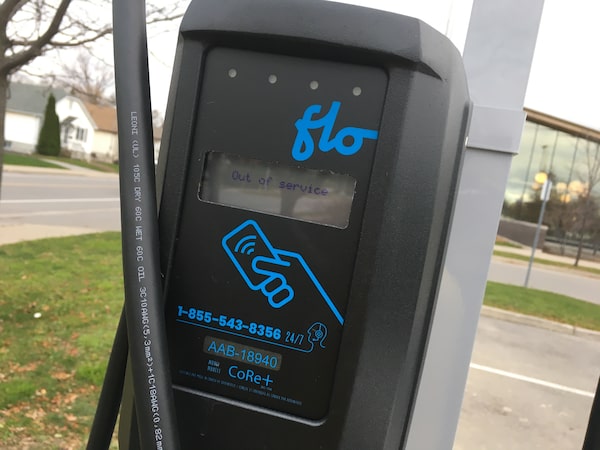
An out-of-service charging station between Toronto and St. Catharines, Ont.Petrina Gentile/The Globe and Mail
Luckily, I’m near my destination and I can charge in the garage. It’s a 110-volt outlet, or Level 1 charger, so charging will take time and patience. With the SEV’s 6.6-kWh onboard charger, Level 2 charging takes approximately 11 hours to get a full charge – it’s about four times as fast as a Level 1 charger.
22 hours later – the display reads 242 kilometres of range and 46-per-cent battery power. I’m better off than the day before. But the colder temperature takes its toll on the range as I drive back to North York. No heat. No radio. And cruise control set to 98 km/h. Déjà vu – the range dips below 50 kilometres and I’m still another 35 kilometres away. When the battery hits eight per cent, it gets worse. The cruise control disengages, the vehicle slows down and it won’t exceed 70 kilometres. Likely, it’s a safety measure, knocking out unnecessary items and reducing speed, so I can travel further, but it’s still unnerving. Cars behind me honk and flash their lights – my cue to exit the highway fast. I stop in Mississauga, about 15 kilometres short of my destination. The man tasked with picking up the SEV comes to my rescue – the clatter of his diesel truck engine a welcome sound. A tow truck comes later to retrieve the SEV.
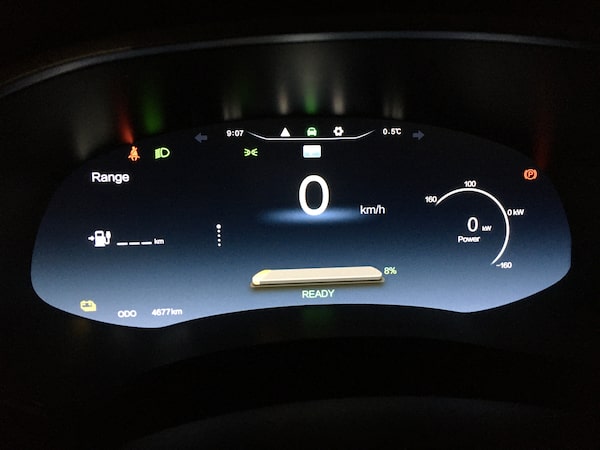
The display of the 2021 Imperium SEV compact showing 8-per-cent battery life remaining.Petrina Gentile/The Globe and Mail
It’s no surprise range anxiety and lack of infrastructure are main barriers to EV adoption, according to Deloitte’s 2022 Global Automotive Consumer Study. It’s too bad because the SEV is better than expected. Behind the wheel, it feels confident, secure, and comfortable. The build quality and craftsmanship are also impressive. Cover the “Skywell” badge on the steering wheel and change the Chinese letters to English and you’d be hard pressed to guess the make and model. It’s also priced competitively. The base Comfort model starts at $37,995; while my Premium trim starts at $44,995. That’s not including provincial and federal EV rebates. In Quebec, for example, $13,000 of EV incentives brings the base price closer to $25,000, which is on par with a gas-powered Honda Civic.
But even at that price, will Canadians buy a Chinese-made EV? “You have three possible reactions to made-in-China,” says Christian Dubois, president of Imperium Motor of Canada. “I don’t care my phone is made-in-China, I’d never buy anything made-in-China – that becomes a political issue that’s impossible to overcome, and I don’t care where my car is made as long as it’s good quality.” But judging by the pre-orders, Dubois has nothing to worry about. So far, approximately 750 SEVs have already been pre-ordered across the country – more than 600 of them in Quebec.
The 2022 Imperium SEV is slated to arrive in Canada by June of 2022. Five hundred special-edition Launch models will also be available, starting at $44,995.
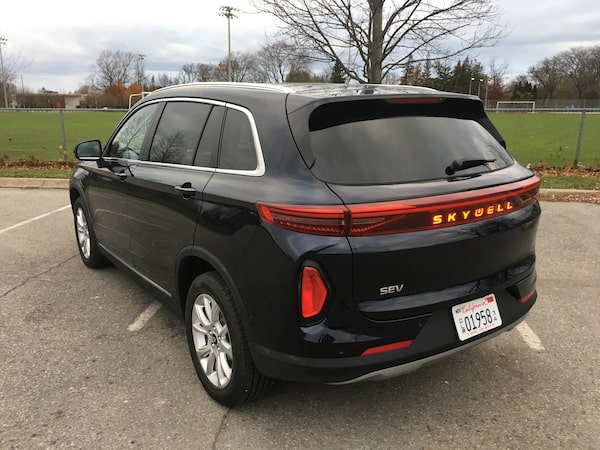
The exterior of the 2021 Imperium SEV. When the brand comes to Canada, the badge will change from Skywell to Imperium.Petrina Gentile/The Globe and Mail
Tech Specs
2021 Imperium SEV compact all-electric SUV
Price: $37,995 – $44,995 (plus $2,075 freight and destination)
Engine: Single, front-mounted electric motor with 204 horsepower and 320 lb-ft of torque
Transmission/Drive: single-speed; FWD
Battery: 55.3 kWh or 71.9 kWh
Range: 410 km – 520 km (NEDC)
Fuel economy (litres/100 km city and highway): none!
Alternatives: Tesla Model Y, Volkswagen ID4, Chevy Bolt EUV, Audi Q4 e-tron, Jaguar I-Pace
Looks
It doesn’t stand out from a crowd of SUVs, but it’s tasteful in its exterior design. When it arrives in Canada the “Skywell” nameplate at the rear will be replaced with an Imperium badge. My test vehicle has charging ports on both sides, but when it comes to Canada, the charging port will only be on the right-hand side so it’s easier to plug-in when parked on a sidewalk.
Interior
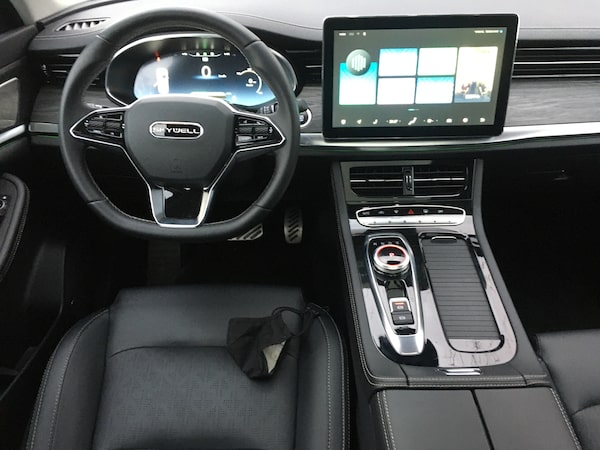
The front seats of the 2021 Imperium SEV compactPetrina Gentile/The Globe and Mail
Although it’s classified as a compact SUV, it’s anything but inside. The rear doors open wide, revealing spacious second-row seats with excellent head, leg, and shoulder room that can easily accommodate three tall adults. My tester’s huge panoramic sunroof makes it feel even larger inside. The interior ambient lighting is on par with a Mercedes-Benz.
Performance
Not the fastest out the gate; it can hit zero to 100 km/h in 7.6 seconds. It has tight steering, pleasant road manners, and an ultra-quiet cabin. Unfortunately no AWD model will be available in Canada – only FWD. Adding AWD would increase the pricing and no longer make it eligible for provincial subsidies.
Technology
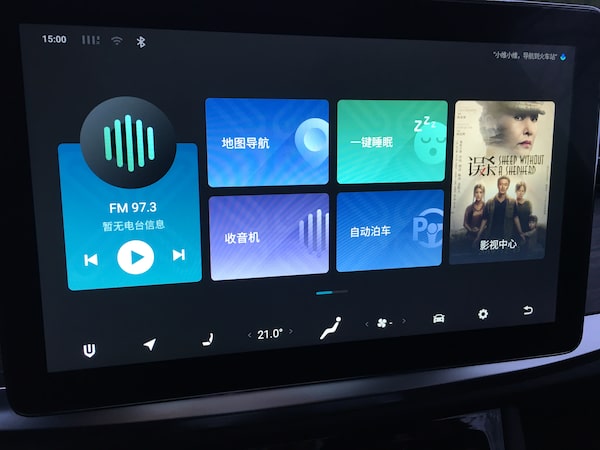
The display of the 2021 Imperium SEV compact showing the Chinese characters. That will change when the vehicle is brought to Canada for more than just a test drive.Petrina Gentile/The Globe and Mail
The base model comes with standard safety technology such as ABS, EBD, TCS, and ESC. Move up to the Premium trim to add cruise control, advance park assist, and front and rear parking radar.
Cargo
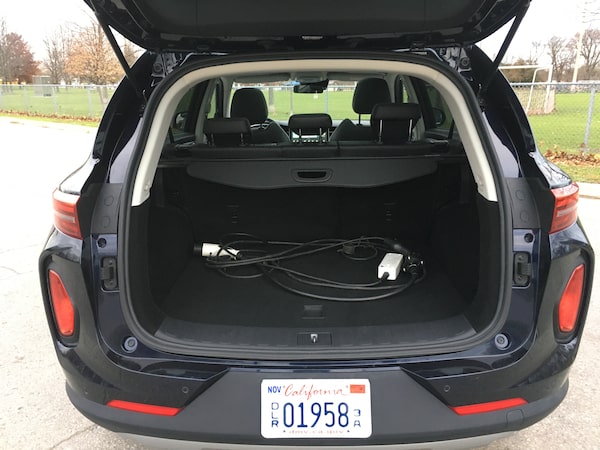
The trunk on the 2021 Imperium SEV with charging cablePetrina Gentile/The Globe and Mail
Unlike many EVs, there’s no front trunk, or frunk, under the hood. But there’s ample space in the rear cargo area – 467 litres behind the second-row seats. If you drop the second row, it expands to 1,141 litres of space.
The Verdict
This made-in-China SEV is value-packed and affordable; it could give the competition a run for its money.
The writer was a guest of the automaker. Content was not subject to approval.
Shopping for a new car? Check out the new Globe Drive Build and Price Tool to see the latest discounts, rebates and rates on new cars, trucks and SUVs. Click here to get your price.
 Petrina Gentile
Petrina Gentile